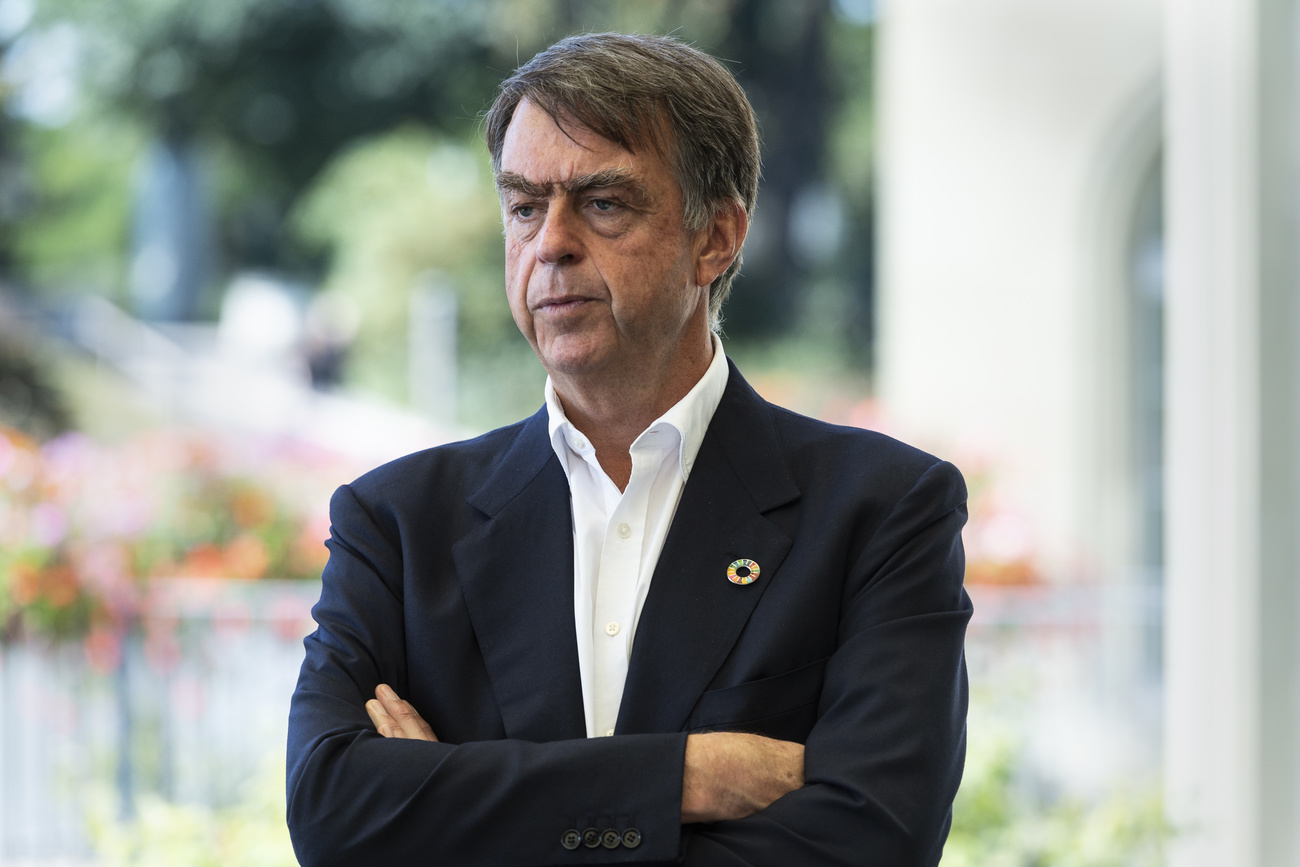Murten battles with its past

The town of Murten - one of the sites of Switzerland's national exhibition, Expo.02 - played a crucial role in shaping European history.
It was at Murten in the 15th century that the Swiss confederates scored a decisive victory over the Burgundian forces of Charles the Bold in one of most famous battles in Swiss history.
The battle was immortalised in a 19th century panorama painting, which has been restored and is being given a second unveiling in Murten at Expo.02.
But the painting is not the only reminder in Murten of the 15th century battle. My guide, Mary Brünisholz, revealed a few more, including Murten’s well-preserved ramparts built in the 14th and 15th centuries.
From the top of the walls, she pointed to the battlefield where the Swiss confederates decimated the forces of Charles the Bold in one day. It was June 22, 1476.
“By six o’clock that evening the battle was over. Some 20,000 people were down, all men,” she says. “And the only people left in the camp of Charles the Bold evidently were the women.”
Medieval jewel
The western town of Murten, on the shores of the lake of the same name, is a medieval jewel.
The ramparts, which still encircle the old town are – along with Murten’s picturesque and tranquil lakefront – the town’s main tourist attraction and the perfect prop to tell the story of the Battle of Murten, a defining moment in not only Swiss but European history.
In Murten and two other battles, the Swiss checked Charles’ expansion, much to the delight of the confederates but also of the French king, Louis XI, and the Habsburgs.
Cannon balls
Charles had been besieging Murten for about two weeks. Cannon balls still embedded in the town walls bare witness to the siege. But the people of Murten hung on during this time, waiting for the Swiss confederates and their allies to come to their aid.
On the morning of June 22, 1476 – a 25,000 strong Swiss force began its attack. It was raining and it had been raining for days. Charles did not expect to be attacked in such conditions. He had given most of his soldiers the day off to rest.
It’s cold and it’s raining as I walk with Brünisholz out to the field where Charles’ had set up his camp. “We know that there was a lot of mud, we know that it was coming down in buckets,” she says.
“We also know that Charles the Bold only had 2,000 men with him in this camp. The majority of his knights had the day off,” she continues.
“So imagine down over the hill, on the other side, they are resting. Suddenly the attack starts. They don’t know what’s happening and they are putting on their armour… in a rush, slipping in the mud, climbing up this hill with all this weight on them and trying to get to where the action is.”
The battle bar
Knight’s armour, weapons, and painted scenes of the battle decorate the Muratum Bar on Murten’s main street. It is an ideal place to round off a tour of the Battle of Murten, and to get out of the rain.
Gilbert Montani opened the Muratum Bar about two years ago. Just inside the front door is a mural, showing famous scenes from Murten’s history. The artist responsible for the work devoted most of his brushstrokes to the battle.
“When the sun finally came out, the Swiss leaders said ‘oh look, it is a sign of victory, so it is time to attack’,” Montani says, explaining the meaning behind the bright yellow swath of paint that cuts through the clouds.
Montani takes me past the main bar area, filled with natural light from the glass roof. We proceed into the darkness of the 15th century, in this case represented by the room dedicated to the Battle of Murten.
Swords and armour
The wooden walls, hung with 15th century swords and armour and paintings of the battle, subdue the room’s light. A smaller room off to the side is a restored kitchen from the 15th century, furnished with ancient tables and chairs, which were left to collect dust for hundreds of years before Montani renovated the building.
Sufficiently dry and even better informed, I went back out into the rain and back to the battlefield with Mary Brünisholz. There is no better place to view Murten.
“We have the city of Murten in front of us where you can see the walled town,” she says. “You have to imagine of course that the wall wasn’t covered at the time, neither were the turrets. They weren’t as high. If you can erase with your eyes the industrial part and the housing part, you could bring history alive again.”
“When we think of Switzerland, we always think of it as quiet and peaceful, ticking along, but there was a lot of action here.”
by Dale Bechtel
Visiting Murten
The Murten tourist office arranges guided tours of the town, in English, with advance notice. Murten is one of four towns in western Switzerland’s “Three Lakes Region” hosting the national exhibition, Expo.02 which runs from May 15 to mid-October. Not to be missed during any tour of Murten is the former 19th century town hall clock, now on working display in a niche of the ramparts. When it was replaced, it was left to rust in hundreds of pieces before it was painstakingly reassembled by a retired machinist with a passion for history.

In compliance with the JTI standards
More: SWI swissinfo.ch certified by the Journalism Trust Initiative









You can find an overview of ongoing debates with our journalists here . Please join us!
If you want to start a conversation about a topic raised in this article or want to report factual errors, email us at english@swissinfo.ch.